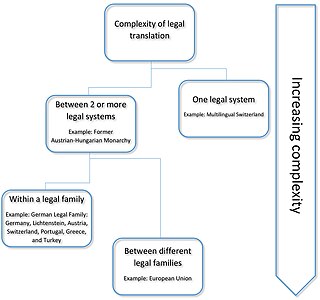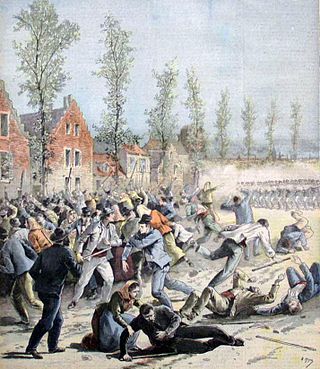Related Research Articles

Education is the transmission of knowledge, skills, and character traits and comes in many forms. Formal education happens in a complex institutional framework, like public schools. Non-formal education is also structured but takes place outside the formal schooling system, while informal education is unstructured learning through daily experiences. Formal and non-formal education are divided into levels that include early childhood education, primary education, secondary education, and tertiary education. Other classifications focus on the teaching method, like teacher-centered and student-centered education, and on the subject, like science education, language education, and physical education. The term "education" can also refer to the mental states and qualities of educated people and the academic field studying educational phenomena.
In linguistics, the grammar of a natural language is its set of structural rules on speakers' or writers' usage and creation of clauses, phrases, and words. The term can also refer to the study of such rules, a subject that includes phonology, morphology, and syntax, together with phonetics, semantics, and pragmatics. There are, broadly speaking, two different ways to study grammar: traditional grammar and theoretical grammar.
Media bias is the bias of journalists and news producers within the mass media in the selection of many events and stories that are reported and how they are covered. The term "media bias" implies a pervasive or widespread bias contravening of the standards of journalism, rather than the perspective of an individual journalist or article. The direction and degree of media bias in various countries is widely disputed.

Sex is the trait that determines whether a sexually reproducing organism produces male or female gametes. During sexual reproduction, a male and a female gamete fuse to form a zygote, which develops into an offspring that inherits traits from each parent. By convention, organisms that produce smaller, more mobile gametes are called male, while organisms that produce produce larger, non-mobile gametes are called female. An organism, such as most flowering plants, that produces both types of gamete is a hermaphrodite.
Cultural bias is the phenomenon of interpreting and judging phenomena by standards inherent to one's own culture. The phenomenon is sometimes considered a problem central to social and human sciences, such as economics, psychology, anthropology, and sociology. Some practitioners of the aforementioned fields have attempted to develop methods and theories to compensate for or eliminate cultural bias.
Machine learning (ML) is a field of study in artificial intelligence concerned with the development and study of statistical algorithms that can learn from data and generalize to unseen data, and thus perform tasks without explicit instructions. Recently, generative artificial neural networks have been able to surpass many previous approaches in performance.
The Webster method, also called the Sainte-Laguë method, is a highest averages apportionment method for allocating seats in a parliament among federal states, or among parties in a party-list proportional representation system.
An audio game is an electronic game played on a device such as a personal computer. It is similar to a video game save that there is audible and tactile feedback but not visual.
An annotation is extra information associated with a particular point in a document or other piece of information. It can be a note that includes a comment or explanation. Annotations are sometimes presented in the margin of book pages. For annotations of different digital media, see web annotation and text annotation.

Legal translation is the translation of language used in legal settings and for legal purposes. Legal translation may also imply that it is a specific type of translation only used in law, which is not always the case. As law is a culture-dependent subject field, legal translation is not necessarily linguistically transparent. Intransparency in translation can be avoided somewhat by use of Latin legal terminology, where possible, but in non-western languages debates are centered on the origins and precedents of specific terms, such as in the use of particular Chinese characters in Japanese legal discussions.
Precision bias also known as numeracy bias is a form of cognitive bias in which an evaluator of information commits a logical fallacy as the result of confusing accuracy and precision. More particularly, in assessing the merits of an argument, a measurement, or a report, an observer or assessor falls prey to precision bias when they believe that greater precision implies greater accuracy ; the observer or assessor are said to provide false precision.
State media or government media are media outlets that are under financial and/or editorial control of the state or government, directly or indirectly. There are different types of state and government media. State-controlled or state-run media are under editorial control or influence by the state or government.
Linguistics is the scientific study of language. Linguistics is based on a theoretical as well as a descriptive study of language and is also interlinked with the applied fields of language studies and language learning, which entails the study of specific languages. Before the 20th century, linguistics evolved in conjunction with literary study and did not exclusively employ scientific methods.

Promegestone, sold under the brand name Surgestone, is a progestin medication which is used in menopausal hormone therapy and in the treatment of gynecological disorders. It is taken by mouth.

Direct action is a term for economic and political behavior in which participants use agency—for example economic or physical power—to achieve their goals. The aim of direct action is to either obstruct a certain practice or to solve perceived problems.

Media Bias/Fact Check (MBFC) is an American website founded in 2015 by Dave M. Van Zandt. MBFC uses an explicit methodology to rate media outlets. It considers four main categories and multiple subcategories in assessing the "Political bias" and "Factual Reporting" of each source.
Seat bias is a property describing methods of apportionment. These are methods used to allocate seats in a parliament among federal states or among political parties. A method is biased if it systematically favors small parties over large parties, or vice versa. There are various ways to compute the bias of apportionment methods.

Marianne Lederer is a French translation scholar. Lederer further developed the Interpretive Theory of Translation together with Danica Seleskovitch, who first proposed the theory. Lederer also published several works on translation and interpreting pedagogy. Her works have greatly influenced interpreting and translation research and teaching internationally.
References
- ↑ Kittel, Harald; House, Juliane; Schultze, Brigitte (2007), Traduction: encyclopédie internationale de la recherche sur la traduction, Walter de Gruyter, p. 1111, ISBN 978-3-11-017145-7
- ↑ Bijay Kumar Das (2005), Twentieth Century Literary Criticism, Atlantic Publishers & Dist, pp. 41–, ISBN 978-81-269-0457-0
- ↑ "Semiotics Glossary G: Graphocentrism". Archived from the original on 26 April 2012.